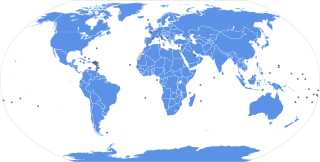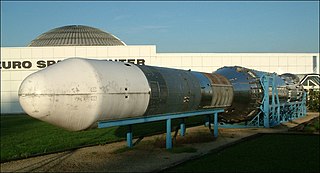It has been suggested that this article be merged into Spaceflight . (Discuss) Proposed since May 2018. |
This article possibly contains original research .(August 2012) (Learn how and when to remove this template message) |
To be spacefaring is to be capable of and active in space travel or space transport, the operation of spacecraft or spaceplanes. It involves a knowledge of a variety of topics and development of specialised skills including: aeronautics; astronautics; programs to train astronauts; space weather and forecasting; ship-handling and small craft handling; operation of various equipment; spacecraft design and construction; atmospheric takeoff and reentry; orbital mechanics (a.k.a. astrodynamics); communications; engines and rockets; execution of evolutions such as towing, micro-gravity construction, and space docking; cargo handling equipment, dangerous cargoes and cargo storage; spacewalking; dealing with emergencies; survival at space and first aid; fire fighting; life support. The degree of knowledge needed within these areas is dependent upon the nature of the work and the type of vessel employed. "Spacefaring" is analogous to seafaring.

Human spaceflight is space travel with a crew or passengers aboard the spacecraft. Spacecraft carrying people may be operated directly, by human crew, or it may be either remotely operated from ground stations on Earth or be autonomous, able to carry out a specific mission with no human involvement.

A spacecraft is a vehicle or machine designed to fly in outer space. A type of artificial satellite, spacecraft are used for a variety of purposes, including communications, Earth observation, meteorology, navigation, space colonization, planetary exploration, and transportation of humans and cargo. All spacecraft except single-stage-to-orbit vehicles cannot get into space on their own, and require a launch vehicle.

A spaceplane is an aerospace vehicle that can fly like an aircraft in Earth's atmosphere and maneuver like a spacecraft in the vacuum of space. To do so, spaceplanes must incorporate features of both aircraft and spacecraft, occupying an intermediate space between the two types. Orbital spaceplanes are more like spacecraft, sub-orbital spaceplanes are more like aircraft. All spaceplanes to date have been rocket powered but then landed as unpowered gliders.
Contents
- Crewed spacefaring nations
- Uncrewed spacefaring nations
- Non-governmental suborbital flights
- General space civilization
- Spacefaring in popular culture
- See also
- References
Until now, there has never been a crewed mission outside the Earth–Moon system. However, the United States, Russia, China, European Space Agency countries, and a few corporations and enterprises have plans in various stages to travel to Mars (see Manned mission to Mars).

Earth is the third planet from the Sun and the only astronomical object known to harbor life. According to radiometric dating and other sources of evidence, Earth formed over 4.5 billion years ago. Earth's gravity interacts with other objects in space, especially the Sun and the Moon, Earth's only natural satellite. Earth orbits around the Sun in 365.26 days, a period known as an Earth year. During this time, Earth rotates about its axis about 366.26 times.

Earth's Moon is an astronomical body that orbits the planet and acts as its only permanent natural satellite. It is the fifth-largest satellite in the Solar System, and the largest among planetary satellites relative to the size of the planet that it orbits. The Moon is, after Jupiter's satellite Io, the second-densest satellite in the Solar System among those whose densities are known.

The European Space Agency
Spacefaring entities can be both sovereign states and private corporations. Spacefaring nations are those capable of independently building and launching craft into space. [1] [2] [3] A growing number of private entities have become or are becoming space faring.

In international law, a sovereign state, sovereign country, or simply state, is a political entity that is represented by one centralized government that has sovereignty over a geographic area. International law defines sovereign states as having a permanent population, defined territory, one government, and the capacity to enter into relations with other sovereign states. It is also normally understood that a sovereign state is neither dependent on nor subjected to any other power or state.

A corporation is an organization, usually a group of people or a company, authorized by the state to act as a single entity and recognized as such in law for certain purposes. Early incorporated entities were established by charter. Most jurisdictions now allow the creation of new corporations through registration.

















